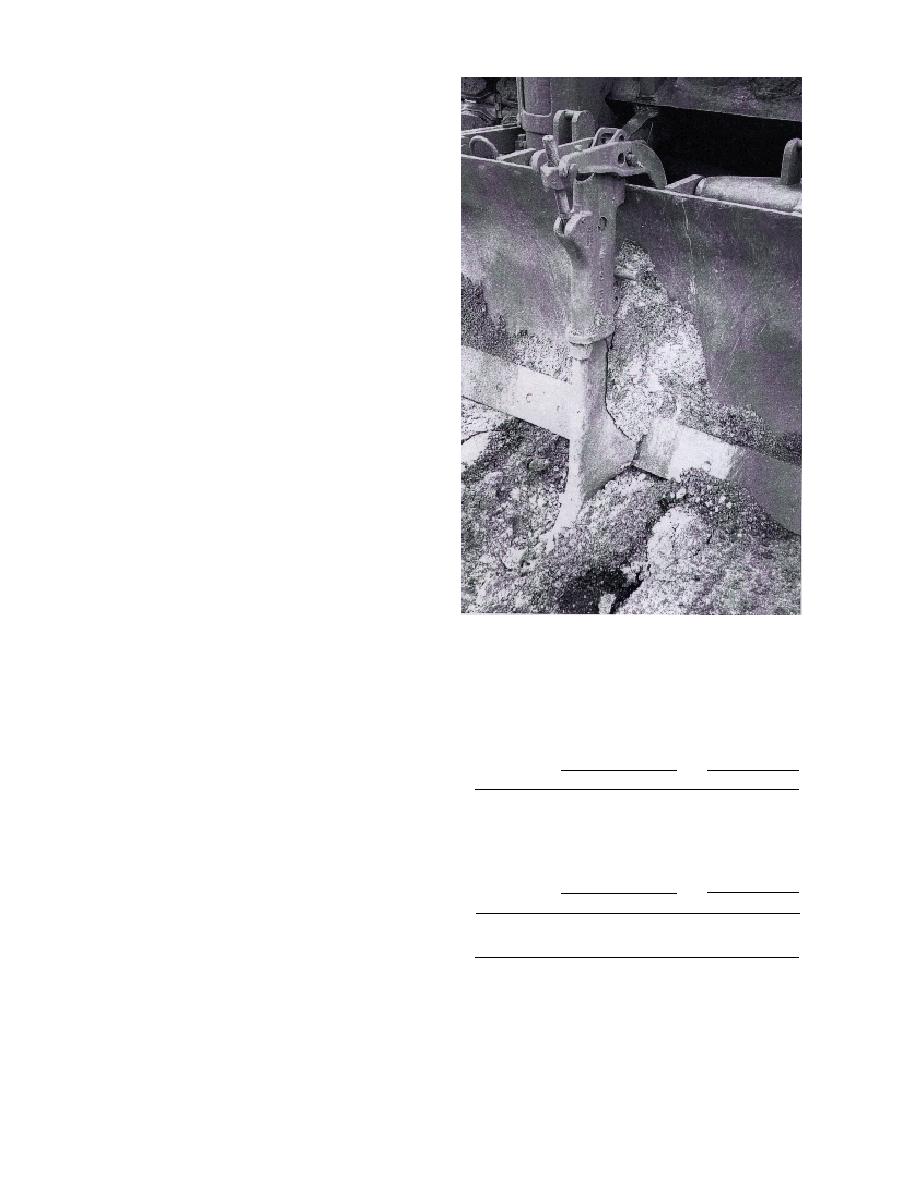
OBSERVATIONS OF WORK USING
THE RIPPER ATTACHMENT
Dozers
To determine if this type of ripper might have
military applications, rippers were acquired that
would fit on a large military dozer and on two
commercial dozers selected to represent smaller
commercial and military tractors. The military
tractor was an Army Combat Engineer Vehicle
(CEV), constructed on the M-60 tank chassis with
modifications to armament and addition of a lift-
ing boom and hydraulically operated dozer blade.
It was selected because it is unable to excavate in
hard or frozen ground. It also represents a type of
softly suspended tractor, based on fighting ma-
chine chassis, that has suspension characteristics
that may affect ripper performance and control.
This tractor with a ripper attachment is shown in
Figure 6.
The smaller commercial tractors were used to
gain an understanding of ripping characteristics
and limits in frozen ground and of the potential
performance of proposed military tractors. The
John Deere 550 and 750 used are shown in Figures
7 and 8 with ripper attachments. General informa-
tion on the tractors and rippers is given in Table 1.
The ACE (Armored Combat Earthmover) was
not considered for mounting a ripper attachment
because of aspects of blade geometry, construc-
tion, and ground clearance of the blade.
Figure 6. Ripper attached to the dozer blade of an Army
Combat Engineer Vehicle (CEV).
Excavation sites
Observations were made at several locations
with different soil types and frost conditions. Sites
free of frost, but with hard ground, were also
used. Frost thickness varied from approximately
Table 1. Machine and ripper specifications.
4 in. (10 cm) to greater than 2 ft (60 cm). Soils
Weight
Power
included a frozen loamy soil in a natural setting
Tractors
(lb)
(kg)
(hp)
(kW)
with a sod cover, a dense frozen silty sand with
local zones containing clay and scattered gravel
CEV*
114,000
65,300
750
559
at an old borrow pit, and a more rocky soil that
JD550
20,000
9,000
90
67
contained some very coarse gravel. Frost greater
JD750
29,000
13,150
110
82
than 2 ft (60 cm) thick occurred at two of the sites,
D7 Cat.
45,000
20,400
200
149
and the ground at these locations was well frozen
Weight†
Penetration
and strong.
Ripper
(lb)
(kg)
(in.)
(cm)
The objective was to learn more about ripping
performance and characteristics, taking into con-
750-H
170
77
11
28
sideration tractor size, traction, tractor suspen-
1000-HL
305
138
14
36
sion (rigid versus sprung), ripping depth, and
* The CEV is several tons heavier than the D9 Cat. and has
machine control during ripping. Attempts to tilt-
twice the power.
doze with the corners of the commercial tractor
† Total weight. The ripper attachment consists of three
blades were used to help assess ground strength
components. The individual parts were handled by two
and as a comparison for judging ripper effective-
people for installation and transport.
6



 Previous Page
Previous Page
